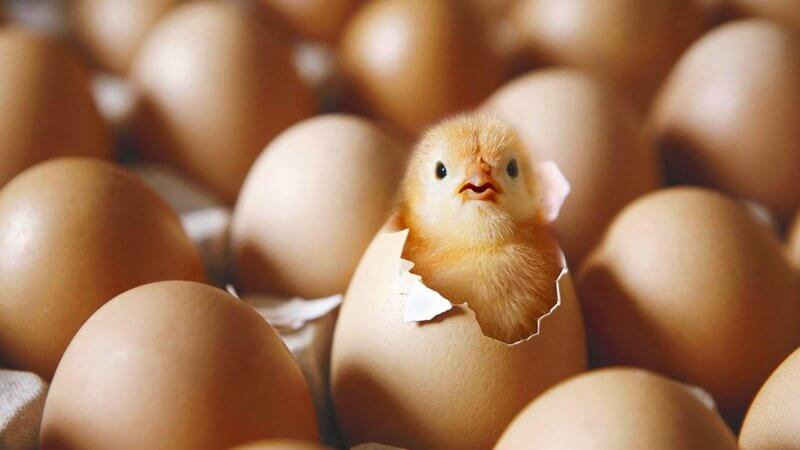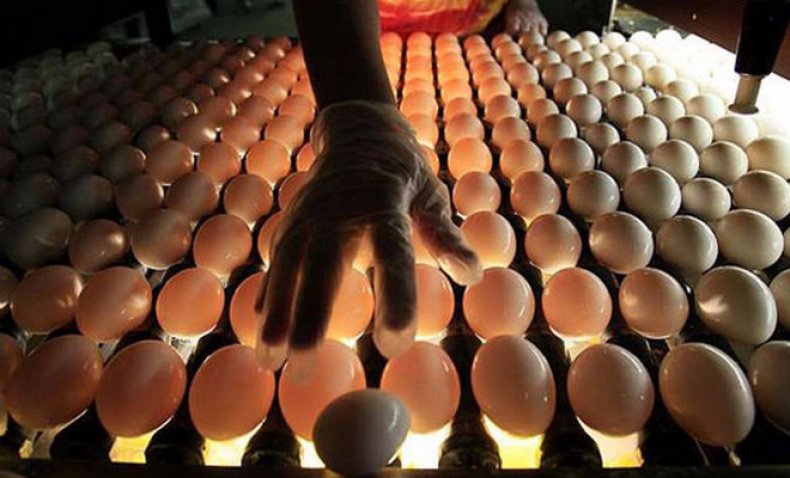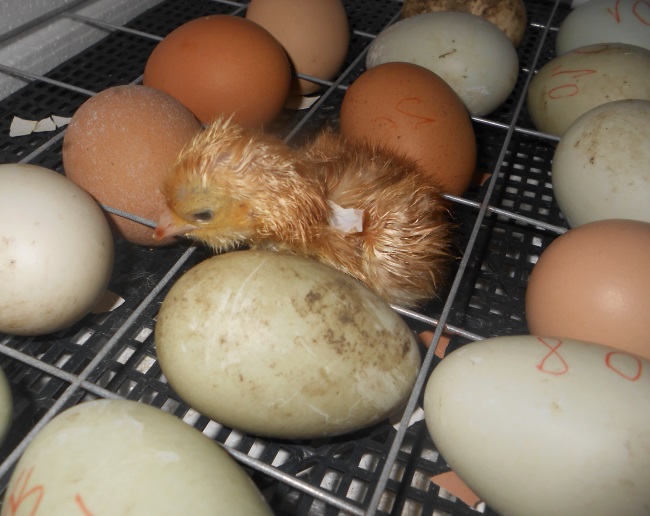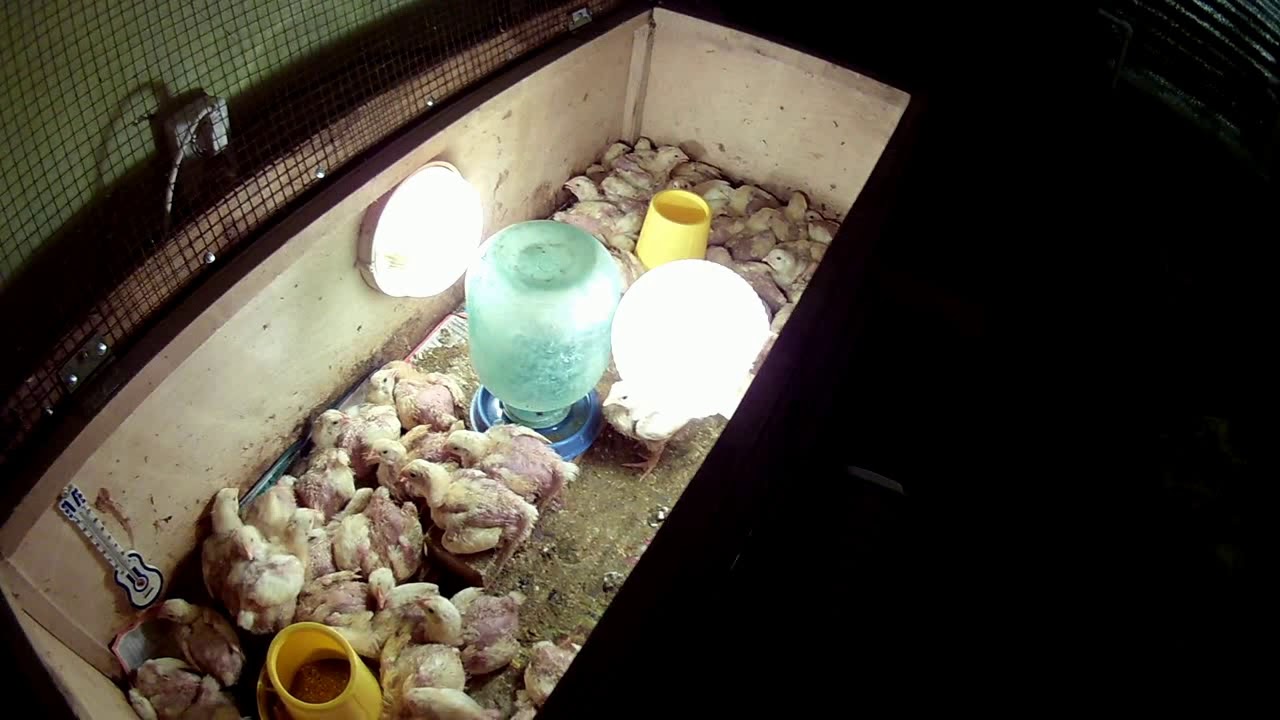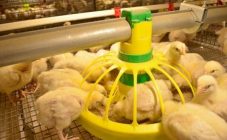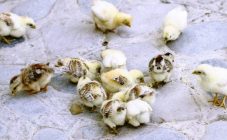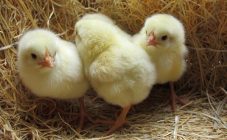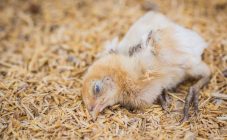Content:
Many farmers are engaged in raising chickens at home. The process of hatching chicks in an incubator has some difficulties. A young farmer looking for a specific breed of chick needs to know how chickens are born.
Hatching chicks
The process of birth of chickens is of 2 types: natural and incubation. The term for the emergence of a chicken from an egg is 21 days with slight deviations up or down.
Egg quality requirements
Many people try to get their chicks out of store eggs. Biologists explain that these eggs are obtained by parthenogenesis, without the participation of a rooster. Chickens on poultry farms lay unfertilized eggs. An egg like this is just a large egg. A fertilized egg differs from an "empty" egg by the presence of an embryonic disc - a circle, several millimeters in diameter, on the surface of the yolk.
Unacceptable storage conditions for eggs in the store make it impossible for a chicken to emerge, even from a fertilized farm egg. Unsuitable temperature conditions, mechanical effects on the egg do not leave a chance for the formation of the fetus.
In order for chicks to be able to hatch artificially, you must strictly follow the rules for selecting the material. Eggs for the incubator must be taken from the perch, selecting the highest quality ones. At the farmers' markets, you need to purchase domesticated eggs fertilized by a rooster and observe the conditions for their storage:
- temperature - from 10 to 15 degrees;
- 70% humidity;
- protection from mechanical impact (shaking, shock, vibration);
- good aeration, fresh air.
The number of broods depends on which eggs the chicks hatch from. If they have been stored for more than 5 days, then the percentage of chickens will be only about 50%. Therefore, the filling material must be fresh, just laid eggs. Only a young hen can hatch good eggs, so the age of the laying hen should not exceed 2 years.
Before laying eggs, it is necessary to check the performance of the incubator by running it idle for several days. The eggs should be left at room temperature for 8-10 hours. Turning eggs in the incubator should be 3 to 6 times a day.
Chick development period
Chicks hatch after 3 weeks with sufficient heat. With a short-term decrease in temperature, its hatching is delayed up to 25 days. If the laying hen begins to incubate the clutch, then a stable temperature regime is maintained in a natural way. She leaves eggs for no more than 15 minutes, absent only for eating.
Chick emergence stages
You can track the hatching process of chicks in the incubator after 18 days. The first signs characteristic of a quick pecking appear:
- the sound of grinding inside the egg;
- the formation of a small hole with cracks;
- the chick begins to squeak barely audibly.
If the listed signs are found or three days before the expected birth of the chick (21 days), a number of actions should be carried out in the incubator:
- Stop turning eggs.
- The temperature should be about 37 degrees, the humidity level should be from 65%.
- After 17 days, the eggs need to be sprayed with warm water, since the dry shell becomes tough and the chick cannot hatch out of the egg on its own.
- To maintain the required level of humidity, you need to monitor the constant presence of water in the lower pan.
How do chicks hatch? Around the 18th day, you can hear a knock on the inner surface of the shell and the squeak of a formed chick, ready to go outside. Usually, the process of hatching a chick takes about 1 hour, in rare cases - several hours.
The release from the egg begins with the formation of a peck, with a pink beak of the chick visible through it. During the expansion of the hole, cracks spread along the surface of the shell. There is a screeching sound, claws scratching on the shell, a chicken squeak. At the same time, the egg moves, as the chick rotates inside, splitting the shell around the circumference with a special formation - "egg tooth".
If hatching occurs naturally, then the brood hen makes inviting sounds. At the next stage, the separation of the halves of the shell in different directions becomes noticeable. As a result of the last sharp effort of the chick, both parts of the egg move apart. A wet chicken appears with shell particles on its body.
Before the final release from the egg, it absorbs the remains of the contents of the yolk sac. This provides him with energy for the first time. Now you need to leave him alone for a couple of hours, you can only remove the shell. The chick should dry up on its own.
Help
How to help a chicken to bite in case of difficulty? You can rely on his natural instinct, but in difficult cases, the chick has to be helped to hatch:
- if the chicken is weak;
- too hard shell due to low moisture levels.
When the process is delayed, the chick may suffocate or lose strength. At the stage of hatching, the mortality rate of weakened chicks is high. It is necessary that he be able to dig out a hole for air penetration in 15-20 minutes.
After the peeling has formed, you can carefully remove a part of the shell on the sides, but no more than 1 cm. You cannot poke the hole further, since the chicken is still connected to the shell by blood vessels. Fatal blood loss for the chick can occur. After separating the halves, you can help the chick to get out.
What to do after a chick is born
The chicks hatched in the incubator on time, what to do next? A day after birth, the chick weighs about 35-40 g. It runs fast, squeaks loudly, and is very active. Weak and lethargic chicks should be kept separately until they are fully recovered.
The chicks need to be moved into a box, no more than 60 cm in height. On the bottom, lay thick paper or lint-free cloth. They are then transferred to a brooder. This is a box with wooden sides, a grid instead of a lid and a lamp (60-100 W) to maintain the desired temperature. An infrared lamp can be used.
Temperature regime
The temperature should be no higher than 35 degrees. It is important to monitor the thermometer and observe the behavior of the chicks. Due to the too high temperature, they stay away from the lamp, throw their heads up. It should be gradually reduced to 28-29 degrees.
On the first day, the light is not turned off in babies, and then the formation of the correct biorhythms begins. The lights should be turned on at 6 a.m. and off at 9 p.m. To provide warmth at night, a heating pad is placed on the bottom of the brooder, and the box is covered with a woolen cloth on top.
Nutrition
Chicks hatched, what to do and how to feed the babies? It used to be thought that chicks should not be fed on the first day. This opinion was recognized as erroneous, since the survival rate of chickens was reduced by 20%. The chicken's body is still developing, so it is recommended to feed them in the first 4-5 hours. Immediately after standing on their legs, the chicks are looking for food, so you can pour crumbly food on them:
- millet;
- corn grits;
- boiled, grated egg yolk;
- you can add semolina to the yolk.
How many times should you feed? Feeding on the first day is done every 2-3 hours. For drinking, use boiled water or herbal decoction of chamomile, yarrow. Usually, chickens have a natural instinct, and they begin to peck on their own.
Further diet - every 3-4 hours. Chicks one day old can eat a wider variety of foods:
- cereals: wheat, semolina, barley, millet;
- fat-free cottage cheese;
- ground oatmeal.
The drinker can be filled with whey or low-fat kefir. It is recommended to feed with starting compound feed with all the necessary vitamins. Crushed eggshells without film can be introduced into the diet to help the chick's digestive system function properly.
Three days later, the chicken menu includes finely chopped greens: dandelion foliage, green onion feathers, young knotweed, dried nettles. You can mix it with cereals. An oily solution of vitamin D is added to the cottage cheese. The grated chicken egg can be given completely.
FAQ
Chicks do not hatch on days 21-22
Often, the farmer receives very few or none of the chicks from the hatchery. If the chicks cannot hatch, the causes of hatching errors or natural factors should be investigated:
- Unfertilized eggs... The reason is a weak inseminating cock.
- Storing eggs in unsanitary conditions leads to the penetration of pathogenic microorganisms (mold, fungus, bacteria) into the egg through the pores of the shell.
- Setting cold eggs in an incubator. The temperature difference forms condensate, the droplets of which clog the pores of the shell. There is a violation of gas exchange inside the egg and the death of the embryo.
- For the embryo to receive enough oxygen, it is necessary good ventilation inside the incubator... It is recommended to briefly open the cover for ventilation.
- Switching the temperature regime at different stages of embryo formation. The temperature (37.5-38.0 degrees) cannot be changed throughout the entire period of embryo development.
- Rubbing and spraying eggs... Chicken eggs will die from this. Only on the 19th day can the shell be lightly sprayed to soften it before pecking the chick.
Chick hatched but didn't hatch
If a full-grown embryo bites, but never comes out, then it is worth analyzing the possible reasons:
- low or too high temperature incubation and insufficient humidity during the entire period;
- lack of nutrients;
- damage to eggs when transferring them to an incubator;
- poor quality eggs;
- breeding stock disease;
- insufficient ventilation of the incubator;
- inadequate turns of eggs, as a result of which the growth of embryonic membranes slows down, the absorption of nutrients decreases.
A weak chick appeared, what to do
An inferior chick can also appear if the parents suffered from a deficiency of carotenoids, B vitamins, as well as due to the old age of the laying hen. What to do with such a chick? A frail chicken must be transplanted into a separate box to avoid contamination of the rest.He will be safe, receive the necessary treatment, food, grow stronger faster and be able to survive.
Chicks freeze in the incubator before hatching
Even with correct incubation, some embryos freeze, that is, they stop developing at one of the stages. Why this happens, the main reasons:
- aging of eggs due to violation of storage conditions;
- viral or fungal infection of the fetus;
- poor heredity, nutritional deficiency of the parent bird;
- incubation mode errors: overheating or hypothermia, incorrect humidity level, disturbed gas exchange, untimely egg turning.
In order to increase the hatchability of chicks during incubation, all the required conditions must be strictly observed.
